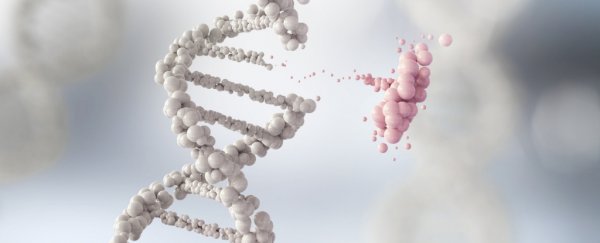The autoimmune disorder lupus impacts roughly half a billion people worldwide, and yet while the name rings familiar, few among us know much about it. Now, we might be closer than ever to determining the real cause of this disease.
With no known cause or cure, lupus can flare up out of nowhere with a host of symptoms caused by widespread inflammation and tissue damage to skin, organs and blood vessels, sometimes fatally so.
Despite the disease's long and rich history, researchers did not even know it was partially genetic until the 1950s. Unable to explain lupus using simple Mendelian logic, it took us nearly seven more decades to find an actual culprit. Now, we have two.
After six years of research, immunologist Simon Jiang and his colleagues have at last found a major cause of lupus: a pair of rare genetic mutations. Previously ignored by researchers, these genetic abnormalities are found in most lupus patients and are the driver of the immune system's attack on the body's own tissues.
"We have shown for the first time how rare gene variants that occur in less than one per cent of the population cause lupus and how these variants drive the disease in the body," says Jiang, a researcher at the Australian National University.
"Until now, it was thought that these rare variants played a negligible role in human autoimmunity and related autoimmune diseases."
Instead, it seems they were both responsible for one of the most mysterious hallmarks of the disease. Recent studies show that in the vast majority of lupus patients, something unknown appears to be driving the excessive and spontaneous production of an immune molecule, even when no virus infection can be found.
These molecules are type 1 interferons (T1 IFN), and when these cytokines proliferate out of control, they can lead to profound changes in the development of the white blood cells (or B cells) that produce antibodies.
This, it turns out, is exactly what the two mutant genes, known as BLK and BANK1, are supposed to be reigning in. Comparing 69 lupus patients with 97 healthy elderly participants, the authors found that these rare genetic variants were far more common among the former group, even when the team repeated the study with 64 more lupus patients.
In mouse models, the variants were also found to increase the amount of malfunctioning B cells present.
"Significantly, we demonstrate that these rare variants exert measurable damaging effects on protein function, ultimately leading to a common endpoint of increased T1 IFN activity in human B cells," the authors write.
While it's true that lupus can also be triggered by hormonal and environmental factors - like sunlight - genetic factors remain one of the most powerful risks. In fact, the chances of an identical twin sharing the disease with their sibling is thought to be roughly 50 percent.
By pinpointing some of the genes responsible, the researchers have now made it that much easier to diagnose, and this is a particularly tricky stage given that lupus has a host of broad symptoms that mimic many other illnesses.
"It now will only take a few weeks to get a patient's genome sequence," says Jiang.
"We can look at how the immune system is behaving, take blood tests and with genome sequencing we can fit the pieces together and see if it is lupus."
Still, Jiang's research doesn't just have the potential to help physicians with diagnosis. Today, new treatments for lupus are limited and wide-acting with a whole bunch of downsides. In 2011, the FDA approved their first new drug for the disease in half a century.
With brand new targets to focus on, we may finally get some fresh contenders, ones that might even be personalised.
"I've already started treating people who have these rare gene mutations with targeted therapies instead of bombarding their immune system with non-specific treatments that have lots of side effects - which is the current mainstay of therapy," says Jiang.
"And because the genes we have worked on are linked to other autoimmune diseases, our discovery could also be applied to conditions like rheumatoid arthritis and type 1 diabetes."
This study has been published in Nature Communications.
